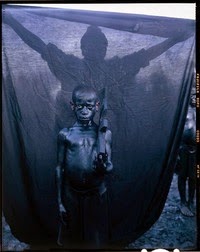Moonrise, Hernandez, New Mexico (1941)
Sales for Adam's prints of this photo exceeded $25 Million
Clearing Winter Storm, Yosemite (1940)
The Tetons and the Snake River (1942)
Ansel Adams is probably one of the most famous photographers
of all time. His legacy includes helping
to elevate photography to an art comparable with painting and music. He was an accomplished piano player and
originally planned on becoming a professional musician. Adams primarily used a large format camera
because its high resolution helped insure sharpness in his images. Although he did work in color, his work was
primarily black and white. He felt color
could be distracting and claimed that he could get “a far greater sense of ‘color’
through a well planned and executed black-and-white image than ever achieved
with color photography”. He co-developed
the Zone System as a way to determine proper exposure and adjust the contrast
of the final print. Fundamental to his
success was the concept of visualization whereby the final image is ‘seen’ in
the mind’s eye before the photo is taken.
Adams was a founder of Group f/64 whose manifesto stated that “Pure
Photography” is defined as possessing no qualities of technique, composition or
idea, derivative of any other art form”.
Ansel Adams was a strong conservationist and his testimony
before Congress helped to have the Yosemite Valley designated a National Park. He was contracted by the Department of the
Interior in 1941 to take photographs of National Parks and Indian reservations
for use as mural sized prints for their new building in Washington. He also received the first of three Guggenheim
fellowships in 1946 to photograph every national park. President Jimmy Carter commissioned Adams to make the
first official portrait of a president made by photograph. Carter also awarded Ansel Adams the
Presidential Medal of Freedom, the nation’s highest civilian honor. He was the author of many books on
photography, and the Sierra Club created the Ansel Adams award for Conservation
Photography in 1971.
Art critic John
Szarkowski wrote "Ansel Adams attuned himself more precisely than any
photographer before him to a visual understanding of the specific quality of
the light that fell on a specific place at a specific moment. For Adams the
natural landscape is not a fixed and solid sculpture but an insubstantial
image, as transient as the light that continually redefines it. This
sensibility to the specificity of light was the motive that forced Adams to
develop his legendary photographic technique."
“It is easy to take a photograph, but it is harder to make a
masterpiece in photography than any other medium” Ansel Adams















































